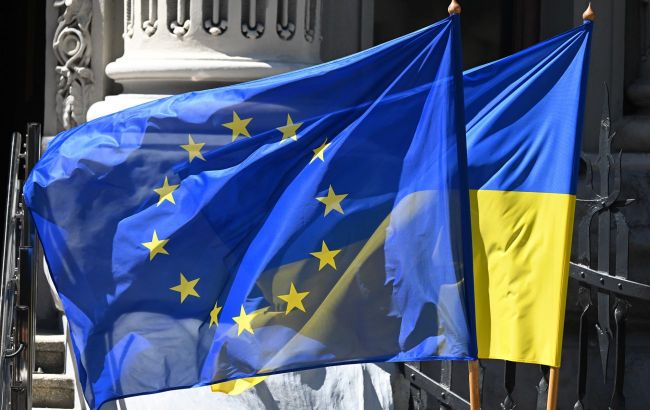FT: EU in urgent search for $19B to support Ukraine
 Photo: EU will cover Ukraine's budget deficit (Getty Images)
Photo: EU will cover Ukraine's budget deficit (Getty Images)
Brussels is urgently exploring ways to cover a $19 billion gap in Ukraine's budget for next year. Kyiv is facing a reduction in US support and worsening prospects for a ceasefire with Russia, reports the Financial Times.
The European Commission is discussing options with EU member states, including directing military support to Ukraine in the form of off-budget grants, advance loans from the existing $50 billion G7 support scheme for Kyiv, and further use of Russian state assets frozen in the EU.
Ukraine’s projected budget deficit for next year has not yet been covered by external financing.
Concerns about next year are growing, and many stakeholders who had counted on a ceasefire agreement this year are now forced to recalculate their spending and realize there is a financial hole, no matter how much they try to narrow it, FT cites a senior EU official involved in negotiations with Kyiv.
The European Commission has already had to adjust spending from funding streams related to Ukraine during 2025, EU officials told the Financial Times, in response to the protracted conflict and lack of confidence in a quick ceasefire with Moscow.
Rome conference
The urgency in Brussels to secure new funding is linked to an upcoming summit in Rome this week dedicated to financing Ukraine’s reconstruction needs, which will be attended by European Commission President Ursula von der Leyen.
The IMF estimates that Ukraine’s funding needs for next year are covered, but this assumes the war ends this year or by mid-2026 — a scenario not shared by Ukraine and the EU.
IMF Managing Director Kristalina Georgieva said last month that the Fund would assess whether this financing gap widens and whether it would require additional external support.
The goal is to ensure Kyiv’s needs are met well before winter, particularly given the uncertain outlook for continued US military support, one EU diplomat said.
Military aid
One proposal Kyiv has shared with G7 countries and which is under consideration in the European Commission, is to channel military support to Ukraine in the form of bilateral grants that would be accounted for separately as an off-budget external transfer, while still counting toward national defense spending targets.
This would serve a dual purpose: contributing to NATO pledges to raise national defense spending to 5% of GDP and providing support to Ukraine.
Instead of duplicating capabilities, European allies could jointly finance Ukrainian forces, viewing this as a service Ukraine provides to strengthen continental security, Kyiv wrote in a document provided to G7 allies and published by the Financial Times.
The Commission was expected to discuss this and other options with EU finance ministers on Monday evening, according to two people familiar with the matter.
The military support to Ukraine provided by member states is not just funding Ukraine’s defense, but also Europe’s defense, and part of it will, of course, be counted as defense expenditure, according to one senior EU diplomat.
Other options
Another option is to await payments from the existing $50 billion G7 scheme, which provides loans to Kyiv based on proceeds from Russian state assets frozen in the West.
Without a ceasefire to stimulate Ukraine’s domestic economy, Kyiv expects a deficit of at least $8 billion in 2026, even if some of the pledged amounts may be provided by partners, including the EU, Japan, and the US. If not, the funding gap could reach $19 billion.
Yet another option could involve extracting more value from Russian assets by reinvesting them into riskier asset classes. A mechanism is being developed to share responsibility for potentially larger financial losses in a way that would not leave Belgium — where most of the assets are held — solely liable.
The National Bank of Ukraine expects the country to receive a record volume of external financial aid this year (around $55 billion), primarily thanks to rapid disbursements under the ERA Loans program. However, in 2026, this volume is expected to fall to $17 billion.

